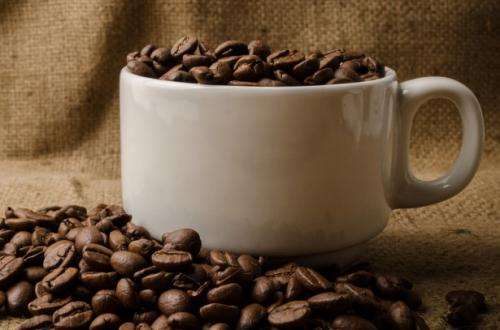Researchers develop method to drink espresso in zero-G

The Maseeh College of Engineering and Computer Science at Portland State University (PSU) today announced another advance in the development of micro-gravity drinking cups.
The new design makes possible the enjoyment of espresso and other drinks in the low-gravity environments of spacecraft. It is the second such innovation to be announced by PSU, following the zero-gravity coffee cup unveiled last summer.
Without the pull of gravity, fluids behave very differently than on earth. Instead of 'pouring,' a liquid retains a more globular shape held together by its own surface tension. This phenomenon complicates even the most basic of maneuvers such as drinking a cup of coffee.
The 3D-printed espresso cup is designed to cheat low-gravity by channeling liquid along a specifically-calculated contour in the vessel to exploit capillary forces that simulate the action of pouring. A patent application for the cup design is on file crediting Mark Weislogel a professor of mechanical engineering and head of the Capillary Fluidics Group at PSU, PhD student Drew Wollman, PSU alumnus Ryan Jenson, and NASA astronaut Don Petitt.
"Its geometry is the 'smart' part, which provides the fluids-control system without requiring pumps or centrifugal forces," explains Weislogel. "The shape of the container can passively drive fluids to desired locations without moving parts—exploiting the passive forces of wetting and surface tension."
Regarding fluid compounds such as espresso, micro-gravity conditions inhibit the production of "crema," the defining feature of a decent espresso shot. A shot of espresso is composed of a complex, low-density colloid of emulsified oils. The earth's gravitational pull causes these oils to rise to the surface producing the aromatic foam enjoyed by coffee aficionados across the globe.
The cup was unveiled at the American Physical Society's Division of Fluid Dynamics Meeting, Nov. 23-25, 2014, in San Francisco, California by Weislogel, Wollman, local high school student Nathan Ott, and NASA Scientist John Graf. Ott is a 17 year-old senior at the School of Science and Technology in Beaverton who made the technical presentation. He connected with the PSU team during a summer internship.
Six 3D-printed cups are scheduled to fly to the International Space Station (ISS) in February 2015 aboard a SpaceX rocket. The cups are being fabricated and flight qualified by IRPI LLC, a startup company founded by Jenson.
"I thoroughly enjoy involving college and high school students in research," said Weislogel. "It's also enjoyable to see how the low-gravity work supported by NASA and performed at PSU using the Dryden Drop Tower has developed—spawning a company, patenting IP, designing advanced systems for spacecraft, and now hoping to benefit the daily routine of astronauts aboard the ISS—with a simple drinking cup of all things."
The Dryden Drop tower is a high-rate, low-cost facility that spans five-stories at the PSU Engineering Building. It provides 2.1 seconds of simulated micro-gravity for testing and experimentation. More than 4,000 drops test have been completed in its four years of operation.
The zero-gravity espresso cup is one of many projects resulting from a suite of handheld and automated experiments known as the Capillary Channel Flow (CCF) and Capillary Channel Flow Experiments-2 (CFE-2). Many of these experiments are guided from the NASA lab at PSU's Maseeh College of Engineering and Computer Science, and performed by astronauts aboard the ISS. This research aims to improve current computer models and analytical tools used by engineers to design low gravity fluid systems on spacecraft.
Experiments related to the development of the zero-gravity cups have been officially dubbed the Capillary Beverage Experiment by NASA. Related tests to be performed onboard ISS next year include simple drinks such as clear juices, to complex drinks such as cocoa and peach mango smoothies.
Provided by Portland State University




















